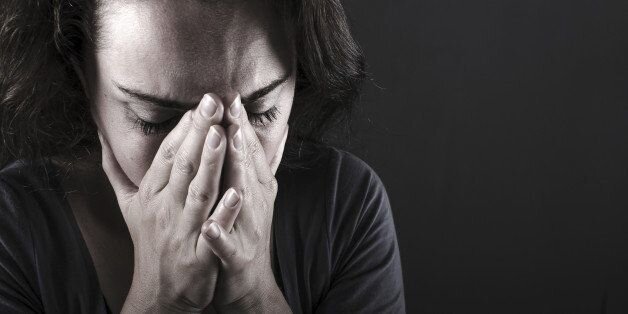By evaluating the costs associated with employees against the value they bring, employers can make informed decisions about resource allocation, talent development, and strategic investments, ultimately enhancing efficiency, productivity, and overall organizational performance.
The terms "cost" and "value" are commonly used in discussions about purchases and investments, yet they represent distinct concepts. Understanding their relationship is essential for effective decision-making and economic evaluation. When making a purchase or investment, individuals and organizations strive to determine whether the value derived justifies the cost. The goal is to achieve a balance where the perceived value meets or exceeds the financial expenditure.
Cost refers to the monetary amount required to acquire a good, service, or asset. It is an objective, quantifiable figure, such as the price of an item or the fee for a service. Value, on the other hand, represents the perceived benefit, usefulness, or worth of something to an individual or organization. It is subjective and varies based on personal or organizational priorities. Value is often measured by how well something meets needs, solves problems, or supports goals.
The distinction lies in their nature: cost is objective, focusing solely on monetary expenditure, while value is subjective, encompassing the benefits and satisfaction gained. Wise decision-making involves evaluating both. An item with a high cost but low value is rarely a sound investment, whereas something with a reasonable cost but significant value often represents an excellent choice.
The relationship between cost and value is crucial for decision-making and economic efficiency. Individuals and organizations aim to ensure that the value derived from a purchase or investment justifies its cost, striving for a balance where perceived value matches or exceeds financial outlay. While cost is objective and quantifiable, value is subjective and influenced by individual needs, preferences, and circumstances. A low-cost item may seem appealing but loses value if it fails to meet needs effectively.
Organizations use cost-benefit analysis to evaluate whether the benefits of an action or investment outweigh the costs. This approach helps allocate resources efficiently and prioritize options that maximize value while minimizing cost. Both businesses and consumers aim for economic efficiency by selecting options that deliver the greatest benefits for the least expense.
From an employer's perspective, the cost of an employee includes salary, benefits, training, workspace, equipment, and other overhead expenses. However, the value an employee provides extends beyond these costs, encompassing their skills, creativity, problem-solving abilities, contribution to company culture, institutional knowledge, client relationships, and role in achieving business objectives.
For example, a software developer earning $150,000 annually may have an additional $50,000 in benefits and overhead costs. Yet, if they create solutions that save $500,000 in operational costs or develop features that generate millions in revenue, their value far exceeds their cost.
This relationship also applies in reverse. Employees evaluate whether their compensation reflects the value they bring through their time, expertise, effort, and dedication. They may consider whether their salary and benefits justify personal costs such as stress, time away from family, or missed opportunities.
Successful employment relationships achieve equilibrium when both parties feel they receive more value than they invest. Employers gain greater productivity and innovation than the compensation paid, while employees receive rewards—financial and non-financial—that outweigh the personal cost of their work commitment.
When an employee directly generates measurable revenue or savings—like a salesperson closing deals or an efficiency expert reducing waste—the value-to-cost relationship is straightforward. For instance, a salesperson bringing in $1 million in sales with $150,000 in total compensation represents a clear value multiplier.
However, many employees add value in ways that are harder to quantify but equally critical. Take a senior engineer, for example, who:
Mentors junior developers, accelerating their growth and productivity.
Makes architectural decisions that prevent future technical debt.
Contributes to a positive team culture, improving morale and retention.
Identifies potential problems before they escalate into costly issues.
The cost-value equation evolves over time. Initially, an employee’s costs may outweigh their value as they adapt and learn. But as they gain efficiency and institutional knowledge, their value grows while costs remain relatively stable. At peak performance, they can generate exponential value through leadership, innovation, and strategic contributions. Some hidden costs and values are often overlooked like:
Hidden Costs
Hidden Value
Network effects from their professional connections
Innovation spillover effects on other team members
Risk mitigation through redundancy of knowledge
Brand enhancement through their reputation
Great employees act as value multipliers. For example, a product manager might boost team productivity by 20%, shorten development cycles by 30%, and increase product adoption by 40%. These improvements compound, creating value far beyond the sum of their individual contributions. Conversely, poor performers can cause value destruction. A toxic employee might damage morale and drive away top talent, costing the organization millions. Similarly, a product manager making poor decisions could create long-term technical or organizational debt, hindering future progress.
This intricate web of contributions and consequences highlights why a simple salary-to-output ratio often falls short in evaluating an employee's true cost-value proposition. Forward-thinking organizations invest in employees with high-value potential, even at higher initial costs. They prioritize creating environments that maximize value generation and focus on long-term impact over short-term cost savings. Recognizing and rewarding both direct and indirect value creation is essential to sustaining a high-performing workforce.
Employee’s Role in Generating Value: Employees contribute value by effectively applying their skills and expertise, taking the initiative to identify and solve problems, and continuously improving their capabilities. Collaborating with colleagues and leadership fosters a positive company culture while taking responsibility and accountability to meet and exceed expectations demonstrates commitment. Value is also created through innovation, process improvements, and building strong professional relationships.
Employer’s Role in Generating Value: Employers enhance value by providing the tools, resources, and training employees need to succeed. Setting clear objectives, offering development opportunities, and recognizing contributions motivate employees to perform at their best. Removing obstacles to productivity and fostering a culture of innovation and improvement amplifies employee contributions and aligns efforts with organizational goals.
Shared Responsibilities: Value generation is most effective when both employees and employers view their relationship as a partnership. Open communication about goals, expectations, and growth opportunities ensures alignment between individual and organizational objectives. Building trust and maintaining strong professional relationships enables organizations to adapt to changing market conditions and requirements.
When both parties are committed to success, the synergy between engaged employees and supportive employers drives optimal value creation. Without motivated employees, an employer’s tools and resources fall short. Similarly, employees cannot reach their full potential without the support and environment provided by their employer.
The DaMar Solutions Consulting Group is dedicated to unlocking organizational excellence by helping you optimize your human resources, empower your workforce for sustainable peak performance, and support an effective talent acquisition strategy to remain competitive well into the future.










